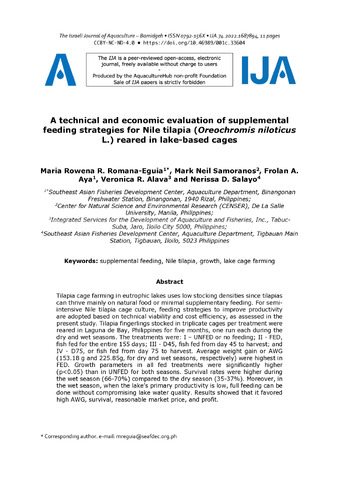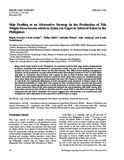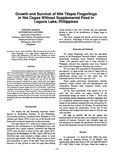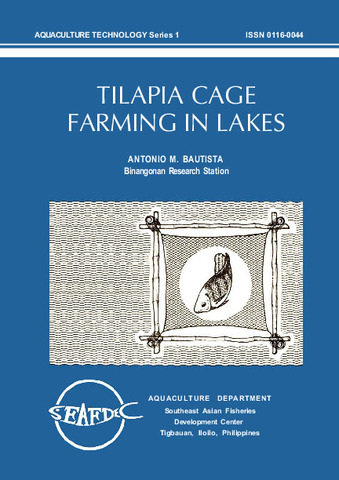A technical and economic evaluation of supplemental feeding strategies for Nile tilapia (Oreochromis niloticus L.) reared in lake-based cages

Associated URL
ija.scholasticahq.comDate
2022-03Author
Page views
453Metadata
Show full item recordCited times in Scopus
Share
Abstract
Tilapia cage farming in eutrophic lakes uses low stocking densities since tilapias can thrive mainly on natural food or minimal supplementary feeding. For semi-intensive Nile tilapia cage culture, feeding strategies to improve productivity are adopted based on technical viability and cost efficiency, as assessed in the present study. Tilapia fingerlings stocked in triplicate cages per treatment were reared in Laguna de Bay, Philippines for five months, one run each during the dry and wet seasons. The treatments were: I – UNFED or no feeding; II - FED, fish fed for the entire 155 days; III - D45, fish fed from day 45 to harvest; and IV - D75, or fish fed from day 75 to harvest. Average weight gain or AWG (153.18 g and 225.85g, for dry and wet seasons, respectively) were highest in FED. Growth parameters in all fed treatments were significantly higher (p<0.05) than in UNFED for both seasons. Survival rates were higher during the wet season (66-70%) compared to the dry season (35-37%). Moreover, in the wet season, when the lake’s primary productivity is low, full feeding can be done without compromising lake water quality. Results showed that it favored high AWG, survival, reasonable market price, and profit.
Suggested Citation
Romana-Eguia, M. R. R., Samoranos, M. N., Aya, F., Alava, V. R., & Salayo, N. D. (2022). A technical and economic evaluation of supplemental feeding strategies for Nile tilapia (Oreochromis niloticus L.) reared in lake-based cages. Israeli Journal of Aquaculture - Bamidgeh , 74, IJA.74.2022.1687894. https://doi.org/10.46989/001c.33604
Subject
Taxonomic term
Collections
- AQD Journal Articles [1249]
Related items
Showing items related by title, author, creator and subject.
-
Skip feeding as an alternative strategy in the production of Nile tilapia Oreochromis niloticus (Linn.) in cages in selected lakes in the Philippines
Cuvin-Aralar, Maria Lourdes; Gibbs, Philip; Palma, Adelaida; Andayog, Aida; Noblefranca, Lydia (College of Agriculture, University of the Philippines Los Baños,, 2012-12)Many inland water bodies in the Philippines are currently used for fish cage culture. Inappropriate practices including feed management in aquaculture results not only in the degradation of water quality but also in economic ... -
Growth and survival of Nile tilapia fingerlings in net cages without supplemental feed in Laguna Lake, Philippines
Basiao, Zubaida; San Antonio, Antonio (Asian Fisheries Society, 1986)Oreochromis niloticus fingerlings were stocked at densities of 50, 100, 150 and 200 fish/m super(2) in fixed net cages in Laguna Lake, Philippines. These were reared without supplemental feed on 1 April-30 July 1980, 5 ... -
Tilapia cage farming in lakes
Bautista, Antonio M. (Aquaculture Department, Southeast Asian Fisheries Development Center, 1984)Guidelines are given for the cage culture of tilapia in lakes in the Philippines. The following major topics are covered: site selection; cage design and layout; operation and management tips.



